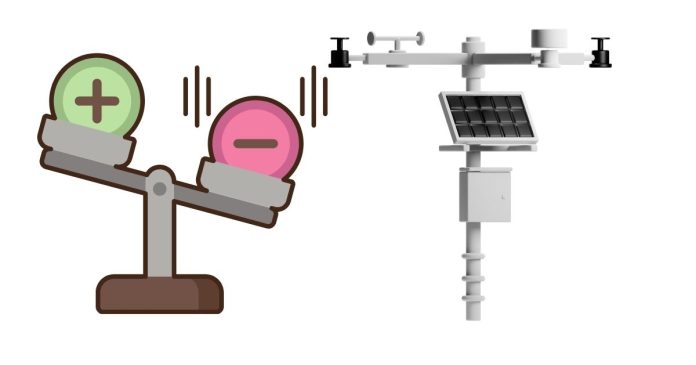Automatic weather stations (AWS) offer many benefits, but there are also several disadvantages associated with their use:
- High Initial Cost: The purchase, installation, and setup of automatic weather stations can be expensive. The costs for advanced sensors and data transmission systems can be a barrier for smaller institutions or remote regions.
- Maintenance: AWS requires regular maintenance and calibration to ensure the accuracy of measurements. Sensors can degrade over time, and environmental factors (e.g., dust, snow, or extreme temperatures) can affect their functionality, leading to a need for periodic repairs or replacements.
- Vulnerability to Environmental Factors: Harsh weather conditions, such as storms, extreme temperatures, or lightning, can damage the equipment or lead to data loss. Some sensors might also be prone to malfunction due to contamination, such as rainwater, bird droppings, or debris.
- Limited to Localized Data: AWS provide data only at the specific location where they are installed. This means that they may not offer a comprehensive view of broader weather patterns or microclimates in an area, especially in regions with varied topography or heterogeneous weather conditions.
- Power Dependency: AWS often rely on external power sources (e.g., solar panels, batteries) to operate. In areas with inconsistent sunlight or power supply, this can affect the station’s ability to function continuously.
- Data Accuracy Issues: While AWS can provide real-time data, there are instances where the data may be inaccurate due to sensor calibration errors, interference from nearby objects, or environmental conditions not accounted for by the system. These errors may go unnoticed without human oversight.
- Limited to Pre-configured Parameters: Many automatic weather stations are designed to measure specific weather parameters (e.g., temperature, humidity, wind speed, and precipitation), but may not provide comprehensive data on other meteorological phenomena (e.g., atmospheric pressure, radiation levels, etc.). Customizing the station to measure additional parameters can be costly and complex.
- Data Overload: The continuous data generation by automatic weather stations can result in large volumes of data. Managing and analyzing this data can be challenging without appropriate software tools and human expertise, leading to inefficiencies.
- Security Concerns: In some cases, data from AWS is transmitted over the internet or other networks, raising concerns about data privacy, cyberattacks, or unauthorized access.
- Dependence on Technology: Over-reliance on automatic weather stations may result in neglect of traditional weather observation methods, reducing the human expertise in interpreting complex weather patterns or anomalies.


